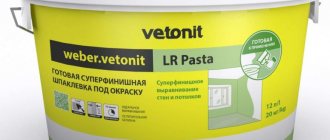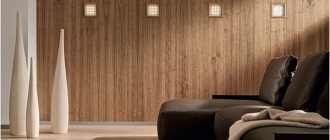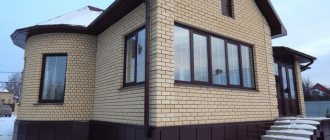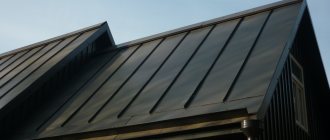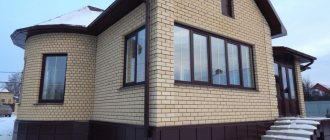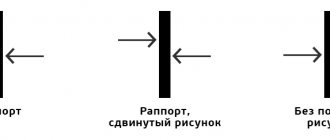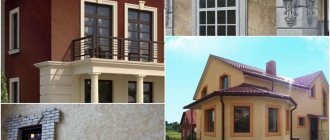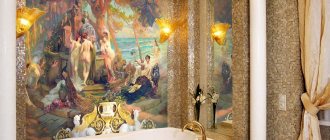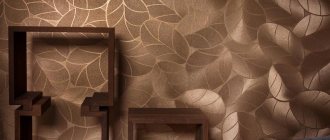Veneered panels today are actively used in the process of interior finishing of walls and ceilings. They fit perfectly into most stylistic trends and can decorate a modern interior. Currently, the construction market offers a huge number of different panels for walls. They are made from natural wood, MDF and chipboard.
The veneer itself is a thin cut of wood that conveys the look and structure of natural wood. It is used to decorate interior doors, wall panels and furniture elements. Veneering is performed by hot pressing a wood sheet onto a base made of wood, MDF or chipboard.
Modern technologies make it possible to create a veneer called fineline; it is made from cheap wood species and processed in such a way as to create an imitation of valuable wood.
The material is painted, pressed, tinted and subjected to additional processing. This is how the colors and texture of the panels are obtained that are different from natural ones, but at the same time fineline is a natural material.
Natural wood panels
Veneered panels for natural wood walls are rarely used due to their high cost and small selection of colors and textures. The basis of such slabs is solid wood of low-value varieties, which is covered with veneer from expensive species: oak, alder, cedar.
A room decorated with natural veneer panels looks very rich and impressive, but such pleasure is very expensive. But the material is natural and environmentally friendly.
MDF panels
Veneered MDF boards are visually very similar to wood, but are much cheaper. MDF boards are made from finely ground chips, which are compressed under pressure at high temperatures. No chemical adhesives are used for gluing; during heat treatment, the chips release a natural adhesive, lignin. The resulting slab is sanded crosswise and then lengthwise - this is how a perfectly smooth surface is obtained. Then it is ironed with a special hot roller and painted with varnish or colored paint. Finally, the surface is covered with wax. All these procedures help improve the qualities of the material such as strength and moisture resistance.
Designers love veneered MDF panels, as they provide great opportunity to implement a variety of ideas. There are a huge number of colors and textures of this material on sale. They are used to decorate the ceiling and walls of living rooms, hallways, bedrooms, offices and other rooms. Some types of veneered MDF allow you to reproduce an original panel, mosaic or a unique pattern on the ceiling or wall. Such panels have other advantages:
- attractive and solid appearance: they are difficult to distinguish from natural wood;
- simplicity and ease of maintenance: just wipe the contaminated surface with a damp cloth; a broken plate can be easily replaced;
- good soundproofing and thermal insulation qualities;
- ease of installation, which does not require any labor-intensive preparation of the walls;
- a light weight;
- environmental cleanliness;
- low water absorption;
- Fade resistance.
Veneer care
After the veneer work is completed, the question remains - what to do next? During operation, the surface becomes slightly dirty, and with careful handling it hardly gets dirty. You can periodically wipe the panels with a damp cloth, or use the cleaning methods and products that the product manufacturer indicates on the packaging.
It is not recommended to use detergents or cleaning agents that contain abrasive components, regardless of their fraction: the front surface will be severely scratched and it is no longer possible to restore such damage. In the best case, it will be possible to partially mask or reduce the glaring effect, but it will not be possible to solve the problem of mechanical damage entirely without replacing the element.
Veneer products are an excellent replacement for heavy and expensive wood. Simplicity of installation, decorative appearance, affordable cost make this type of product a desirable option for cladding. Due to its high performance characteristics, veneer has gained high popularity and has been in great demand almost since the start of production.
The process of installing veneer in MDF format is clearly shown in the following video:
Chipboard panels
Chipboard wall panels are also used for interior decoration. This is the cheapest type of veneered finishing materials, since they are based on chipboard. It is obtained by pressing dry wood chips with the addition of synthetic adhesive resins. Veneering occurs in the same way as with MDF boards. The advantages of chipboard material are:
- low price;
- ease of maintenance and installation;
- a large abundance of all kinds of colors and shapes.
But veneered chipboard panels have many disadvantages:
- weak environmental performance;
- absorb moisture;
- heavy weight;
- low quality compared to other veneered panels.
To increase the moisture resistance of chipboard material, it is coated with plastic. In this case, the panel can have any appearance - from imitation oak to bright acid shades.
What types of panels are there?
Based on size and shape, panels are divided into:
- rack and pinion;
- tiled;
- leafy.
Slat panels are long slats of varying lengths, thicknesses and widths. This type is most popular when decorating walls or ceilings in small spaces. Installation of slatted veneer panels is carried out on wooden or metal guides using self-tapping screws or staples. The slats are laid so that they are perpendicular to the guides. The planks are connected to each other using the tongue-and-groove method. In this case, there will be a minimum gap between them. In the corner, the slats are joined using special fittings.
Tile materials are produced in the form of squares. This is the most convenient form of ceiling panels. They are attached to the wall using glue or special clamps. The main advantage of tile panels is that they can be placed at different angles and thus create an original pattern.
Sheet panels are the largest, made in the form of rectangles. They are usually made from resin-impregnated fiberboard or chipboard. Sheet plates have a multilayer structure, on top of which a pattern is applied. This can be imitation wood, tiles and other options. They are mounted to the wall using glue. The gaps between the sheet panels are hidden with moldings. Such slabs are very convenient for covering a large area in a short time.
Decorative veneer panels can differ not only in shape and shade, but also in texture. Thanks to modern technologies, you can find smooth, rough, glossy or matte options on sale.
Specifications
Veneer is a thin cut of wood, made while preserving the peculiarities of the structure and wood pattern. Depending on the production method, natural veneer is distinguished (layers of valuable species) or restored (less popular species with imitation of noble material). In other words, in the second case, the consumer is offered a budget material that looks similar to expensive models, but does not have the same properties.
Veneer panels are produced in two standard sizes - 0.381 m or 0.65 * 1.35 m. Non-standard shapes can be ordered separately. The products are safe in composition, do not contain or emit harmful substances, and do not provoke allergic reactions. With such cladding it is easier to care for the walls, since the surface does not require much effort to clean.
The wear-resistant material withstands mechanical stress, direct sunlight, contact with water and other external phenomena. Lightweight products allow finishing to be completed easily, quickly and without harming quality - as a result, the room will look presentable.
Interior ideas
The variety of shapes, sizes and shades allows designers to fit veneer panels into almost any interior style. This cladding is used to create interiors in classic, minimalist, colonial or eco-style.
In order to get a fashionable and original interior using veneer panels, use the following techniques:
- They take two types of panels of different colors, contrasting with each other, and arrange them in a checkerboard pattern, randomly or at certain intervals.
- If you have small children or animals and you are concerned about stains on the walls, you can choose panels in variegated colors. It will be more original if you arrange them so that the wood fibers are directed in different directions: some horizontally, others vertically.
- The zoning method is perfectly applicable to this type of material: the section of the wall behind the bed or sofa is trimmed with panels, and the rest of the room is decorated with wallpaper or plaster.
- If you are planning to decorate a large room, a chaotic arrangement of panels in two or three levels will suit you. And if you place lighting in individual slabs, this will enhance the visual effect of the interior.
Veneered panels will allow you to create not only a unique, but also a practical design for any room. They have absorbed the environmental friendliness and beauty of natural wood, but at the same time are devoid of its disadvantages: drying out and excessive moisture absorption.
Areas of use
Most often, veneer is found inside private houses or non-residential premises, for example, offices, administrative buildings, public buildings and the like.
The material is actively used for decorative finishing of restaurants, cafes, and entertainment centers, as it creates a noble atmosphere. Depending on the type of veneer chosen, you can make a spectacular cladding, or use the raw material as a leveling layer or part of the overall structure.
Veneer in a public place
For example, fiberboard and chipboard are used in the construction of photo zones and leveling surfaces before further finishing. And finished panels with proper processing and accompanying gloss are installed after completion of rough work and are not covered with anything on top.
Increased characteristics of aesthetics, wear resistance, reliability and durability can significantly expand the scope of application of raw materials. For example, this type of material is often used to assemble furniture, decorative panels, use them to decorate openings, make doors, and so on.
